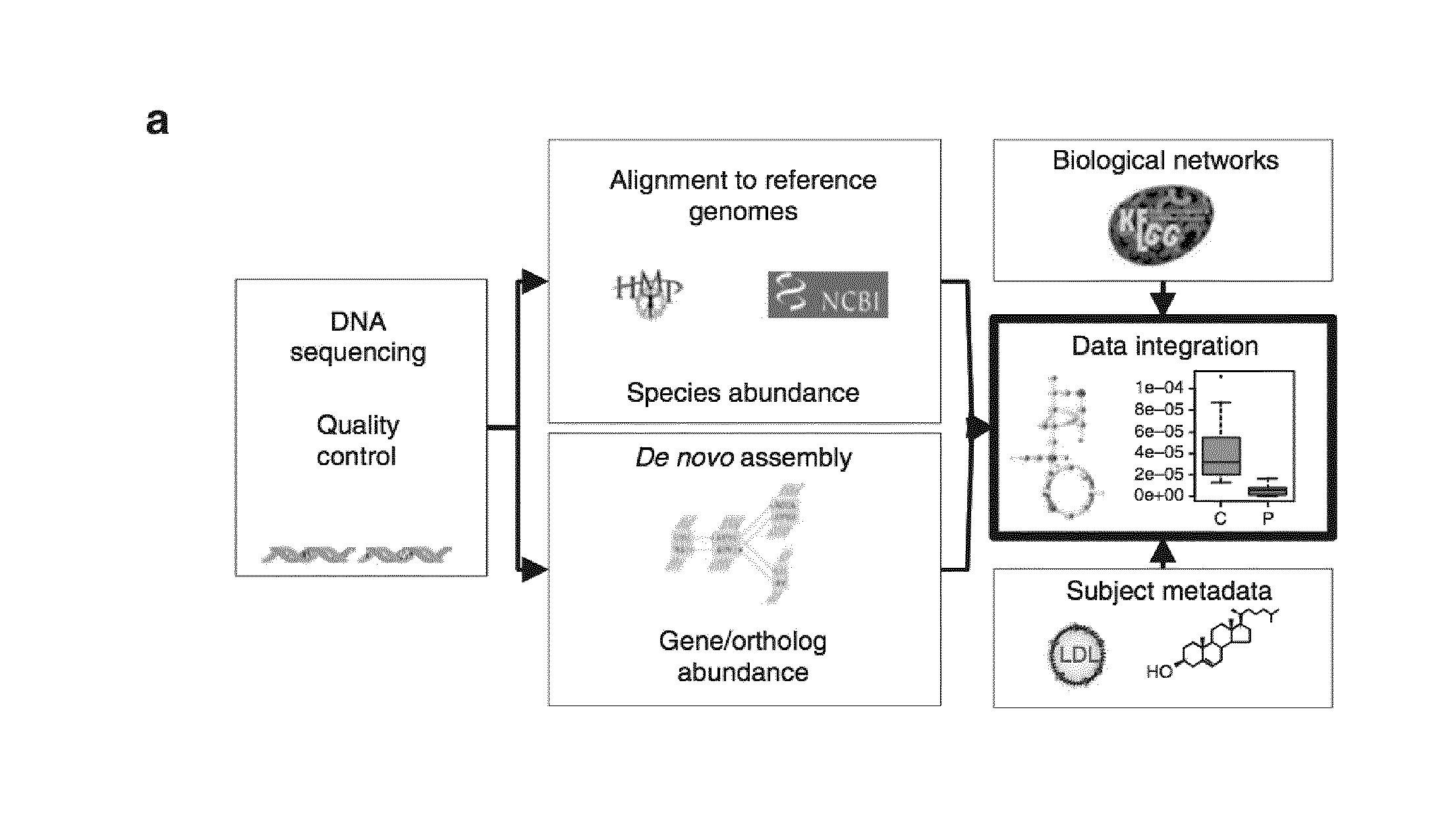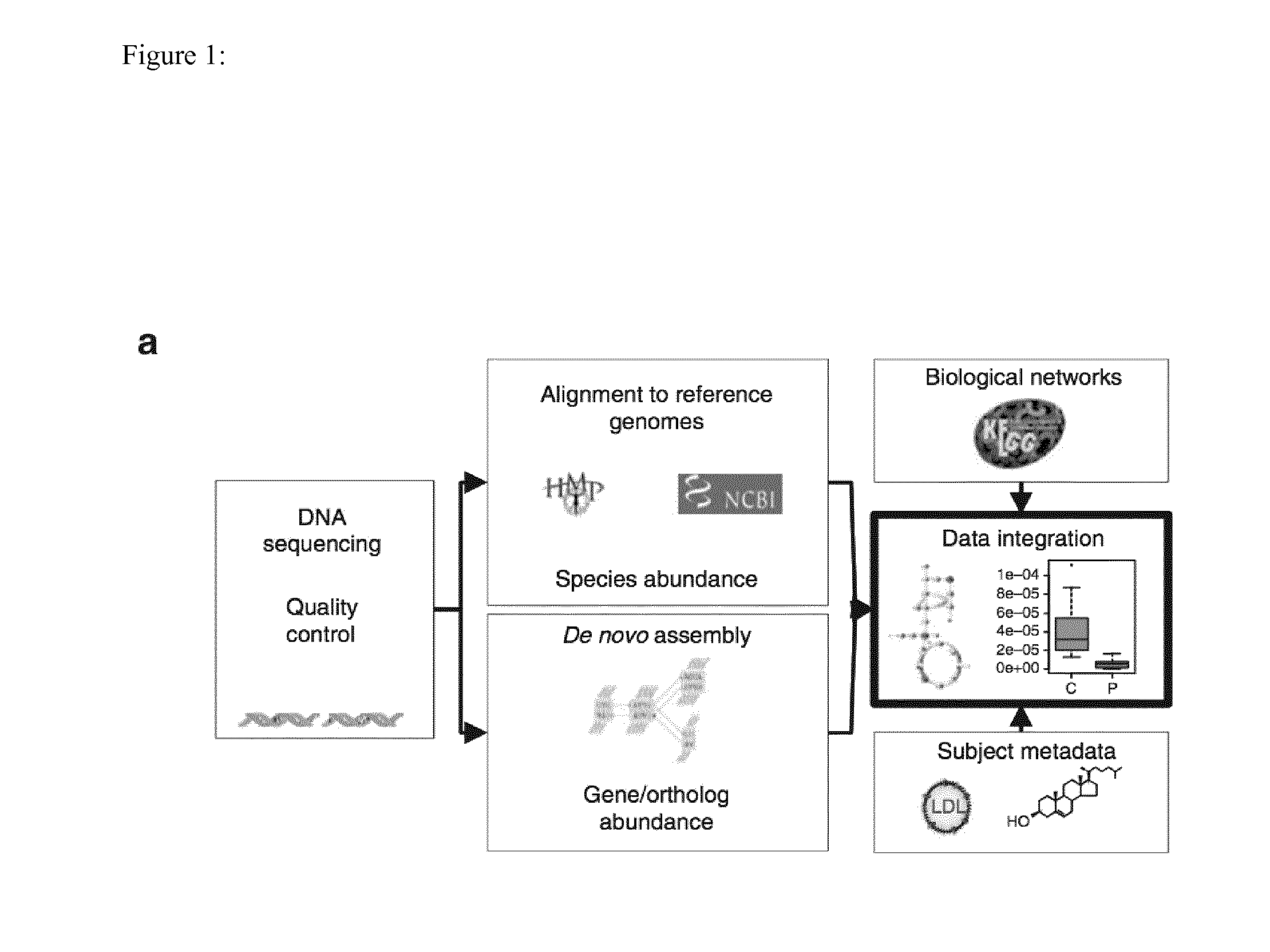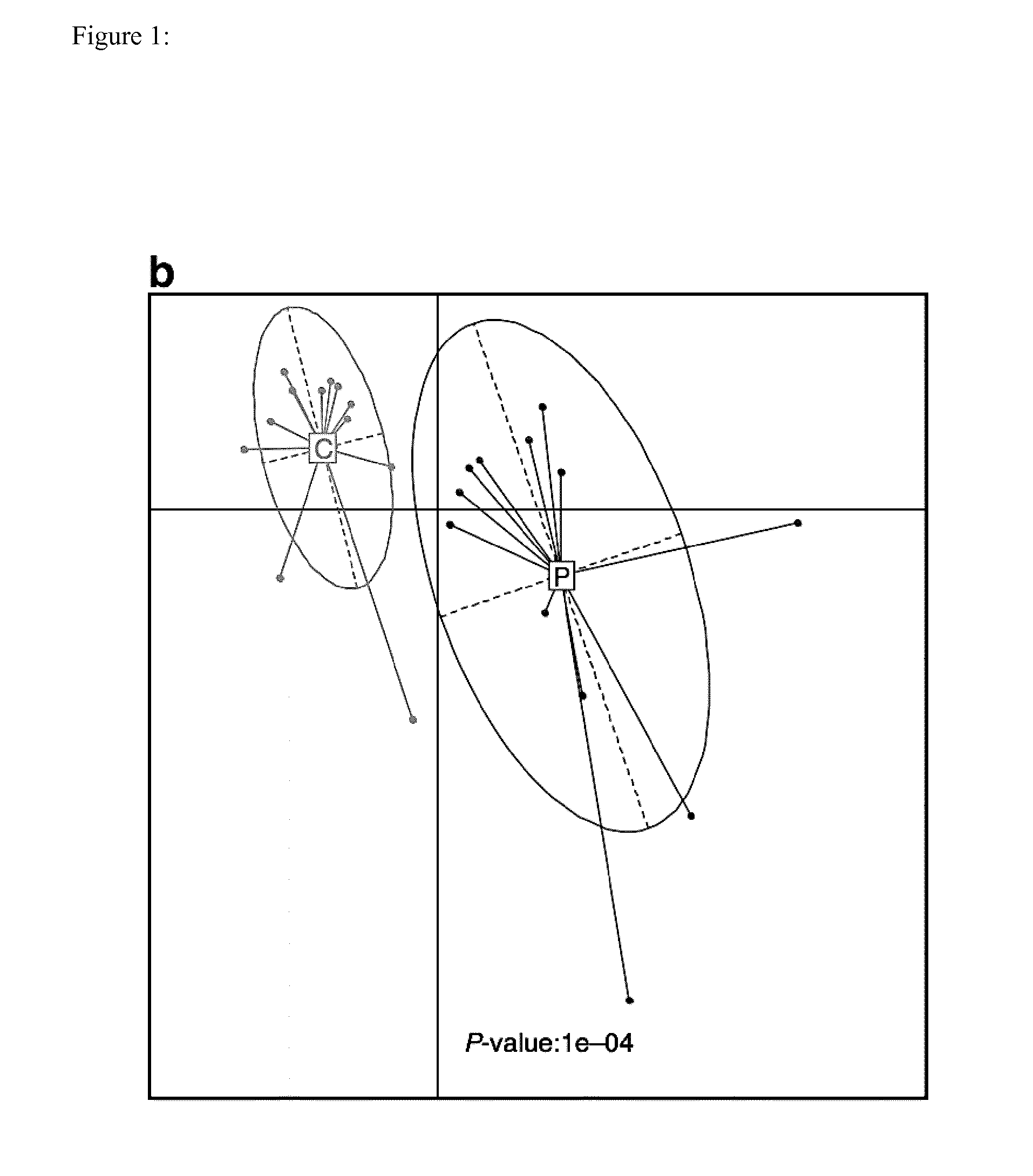Identification of a Person having Risk for Atherosclerosis and Associated Disease by the Person's Gut Microbiome and the Prevention of such Diseases
a gut microbiome and person's disease technology, applied in the field of medicine, can solve the problems of largely unstudied human development, physiology, and many, if not most, have never been successfully isolated as viable specimens for analysis, and achieve the effect of reducing the level of this anti-oxidan
- Summary
- Abstract
- Description
- Claims
- Application Information
AI Technical Summary
Benefits of technology
Problems solved by technology
Method used
Image
Examples
example 1
Patient and Control Groups
[0115]The patient samples were from the Göteborg Atheroma Study Group Biobank, which includes samples from patients who had undergone surgery to excise an atherosclerotic plaque (12). All patients had severely stenotic plaques in the carotid artery with ipsilateral manifestations of emboli to either the brain, as minor brain infarction or transient ischemic symptoms, or to the retinal artery (Table 1). The control group was selected to represent an age- and sex-matched group with no cardiovascular health problems and was recruited from two on-going population-based cohorts that have been described previously (32, 33). The investigations of the control group included repeated ultrasound examinations of the carotid and femoral arteries, and no large, potentially vulnerable plaques were detected. Further inclusion criteria in the control group were no history of cardiovascular disease, no smoking, no diabetes and no treated hyperlipidemia. The underlying ratio...
example 2
Sequencing
[0119]All samples were sequenced in the Illumina HiSeq2000 instrument at SciLifeLab in Stockholm, Sweden, with up to 10 samples pooled in one lane. Libraries were prepared with a fragment length of approximately 300 bp. Paired-end reads were generated with 100 bp in the forward and reverse direction.
Data Quality Control.
[0120]Sequencing adapter sequences were removed with Cutadapt M. Martin. Cutadapt removes adapter sequences from high-throughput sequencing reads. EMBnet.journal, North America, 17, May 2011. The length of each read was trimmed with SolexaQA (Cox, M. P., D. A. Peterson, and P. J. Biggs. 2010. SolexaQA: At-a-glance quality assessment of Illumina second-generation sequencing data. BMC Bioinformatics 11:485) with the options -b p-0.05 (37). Read pairs with either reads shorter than 35 bp were removed with a custom Python script. The high-quality reads aligning to the human genome (NCBI version 37) with Bowtie (38) using -n 2 -1 35 -e 200 --best -p 8 --chunkmbs...
example 3
PCA and Enterotypes in the Cohort
[0129]An instrumental principal component analysis with the health status as the instrumental variable revealed that the microbial species abundance separated patients and healthy controls (FIG. 1b, P=1e-4). The genus Collinsella was enriched in patients whereas Eubacterium and Roseburia and three species of Bacteroides were enriched in control subjects (Adj. Pc). Several bacterial groups correlated with cardiovascular risk factors (FIG. 1d); in particular in the genus Clostridiales: Clostridum sp. SS2 / 1 and the poorly characterized butyrate-producing Clostridium SSC / 2 negatively correlated with the inflammatory marker high sensitivity C-reactive protein (hsCRP).
[0130]A recent study has suggested that the human gut microbiota can be stratified into three enterotypes of distinct microbial compositions (14). We analyzed our samples according to that study (14), calculated the Jensen-Shannon distance of the genera abundance, and clustered samples with p...
PUM
| Property | Measurement | Unit |
|---|---|---|
| flow rate | aaaaa | aaaaa |
| wavelengths | aaaaa | aaaaa |
| wavelengths | aaaaa | aaaaa |
Abstract
Description
Claims
Application Information
 Login to View More
Login to View More - R&D
- Intellectual Property
- Life Sciences
- Materials
- Tech Scout
- Unparalleled Data Quality
- Higher Quality Content
- 60% Fewer Hallucinations
Browse by: Latest US Patents, China's latest patents, Technical Efficacy Thesaurus, Application Domain, Technology Topic, Popular Technical Reports.
© 2025 PatSnap. All rights reserved.Legal|Privacy policy|Modern Slavery Act Transparency Statement|Sitemap|About US| Contact US: help@patsnap.com



